Meet Buddy, the sweetest most affectionate 12-year-old cat whose purr could be heard across the room.
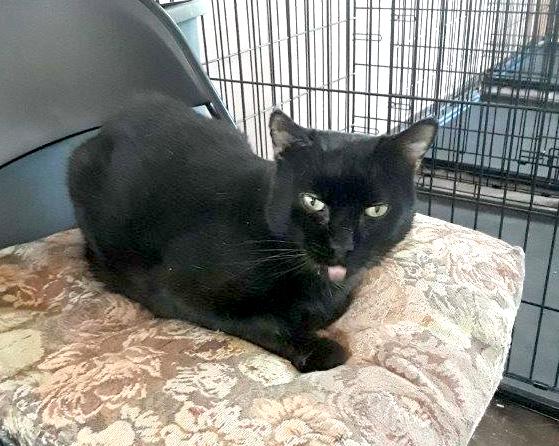
Never would you imagine this happy guy had been tortured: his legs were glued together and his mouth filled with glue. It took several weeks of bathing him to clean his fur, but the remaining glue in his mouth burned his trachea and larynx. He couldn’t make a sound after that and could eat only baby food meat for months. Diagnosed with feline immunodeficiency virus (FIV), he required costly monthly vet visits, a possible reason he was abandoned and homeless. Granted he’s an extreme example of animal abuse but sadly he’s not the exception. Although abuse isn’t specific to cats and dogs (think horses, even livestock), they are most commonly affected.
It was at the Companion Animal Action Team (CAAT) spay/neuter clinic in Williamsburg where I first met Buddy and his human, Majie Powey, a dynamic personality fully suited to make order out of the chaos on this busy day. Buddy found his angel in Majie, who took care of him and his vet bills and had been his human companion for the past three years. She also pays for all the building expenses–donations and grants go for spay/neuter, emergency care, and food for needy animals. But it takes more than one person to make this organization run. More than half a dozen volunteers are dedicated to the welfare of the animals in their charge, many of them here today for the spay/neuter clinic.
CAAT focuses on low-cost spaying and neutering for cats and dogs. Their building is in Williamsburg, just before the turnoff to the frontage road (Rt. 187), noted by the Paws N’ Hooves trailer parked in their lot. Once a month Dr. Amy Starr from El Paso sets up a surgical suite in the trailer for those who have signed up in advance. Prices for cats are $30 to neuter, $40 to spay and for dogs, $50 to neuter and $60 to spay. The cost does not include vaccinations for rabies ($15), which is required by law in New Mexico and is still prevalent in Sierra County; distemper-parvo or feline respiratory complex (each $10).
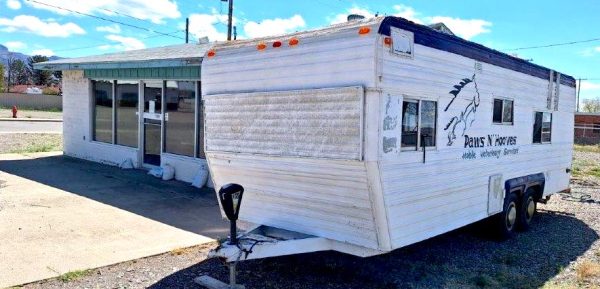
CAAT was started by Deb Peters and Diane Lombardo; in 2012 Majie joined and obtained their nonprofit status. Although the group receives some grant money, it’s not nearly enough to cover all the costs: food, first and foremost, vet bills, supplies, and of course, toys. That’s where the Sierra County Animal Rescue Society (SCARS) comes in, helping with funding as well as raising awareness.
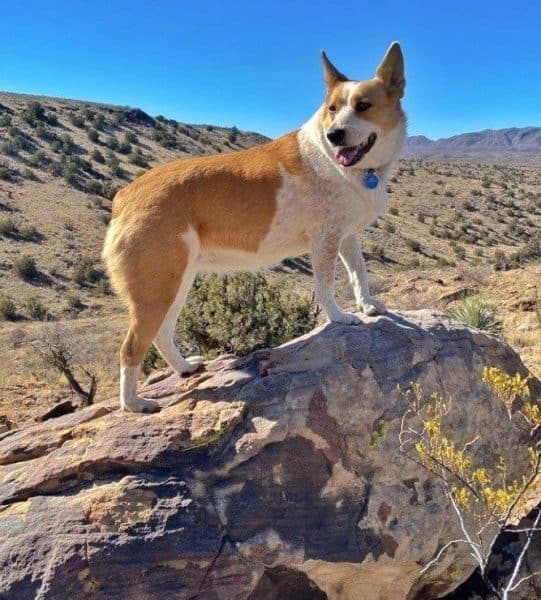
The SCARS excellent and comprehensive website is chockful of hints and how-tos for your pet. For example, dog fighting rings do exist, so never give away animals for free. And pets in your own backyard are not automatically safe either; it’s best to keep them inside or be outside with them. The website tells you how to protect and treat your pet from the cold, heat, foxtail grass, beestings, Lyme disease, and more. In 2019 SCARS sponsored spay/neuter and vaccination of 30 dogs and 67 cats—in 2023 that number grew to 218 dogs and 359 cats, most all of whom were stray or shelter owned. President and treasurer Robbin Brodsky notes that each year the burden increases, and each year they need more money to be able to sponsor the county’s companion animals, either with spay/neuter surgeries or veterinary care.
Cats aren’t the only victims to abuse: people who don’t spay/neuter their dogs often wind up with unwanted puppies and no way to find them homes, so they leave them in the desert to fend for themselves, which never ends well. But not spaying or neutering isn’t abuse, is it? Maybe not as extreme as Buddy’s case but yes it is, it’s abuse by neglect. An intact animal will have a shorter life, be prone to fatal diseases (pyometra, infection of the uterus, if untreated is fatal), get into fights, be hit by cars, and become aggressive to other animals as well as people. One female cat and her offspring can produce 420,000 cats in 7 years; one female dog can produce 67,000 dogs in 6 years. That’s a lot of animals to find homes for (it costs less to spay and neuter than to raise one litter).
The MDT Cat Rescue, headed by a one-man band named Marian Thornton, is making a dent in the feral cat breeding population. Up until fairly recently campers at Percha and Caballo State Parks, for example, were inundated with feral cats, who were being fed by campers. Marian’s TNR (trap, neuter, release) program has been trying to diminish this population, and it seems to be working. She traps the cat, spays/neuters it, notches an ear to prove it was altered (left ear for males; right ear for females), then returns the animal to where it was found (SCARS covers the costs of surgery and vaccinations if the animal is taken back to where it was trapped). Of course feral cats aren’t limited to the state parks; one T or C resident says he has nearly a dozen living in the lots around him and Marian says she has been trapping more cats on the other side of the Rio Grande, where people drop them off, thinking they won’t cross the river to get back home. She traps about 100 cats a year, urban and rural, and houses them in her barn—28 at last count.
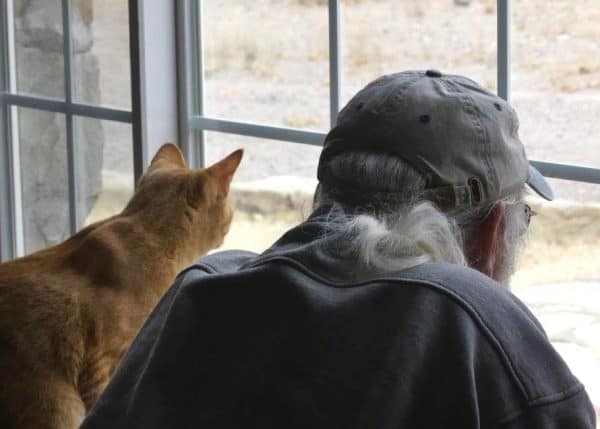
Just off the frontage road south of Williamsburg lies the Desert Haven Animal Rescue (DHAR), where companion animals’ daily nutrition, exercise, and cuddling needs are met by committed volunteers. As a no-kill sanctuary, dogs and cats live at DHAR as long as they need to or until a good home is found. The facility is undergoing reorganization, with plans to train high-risk animals to be adoptable.
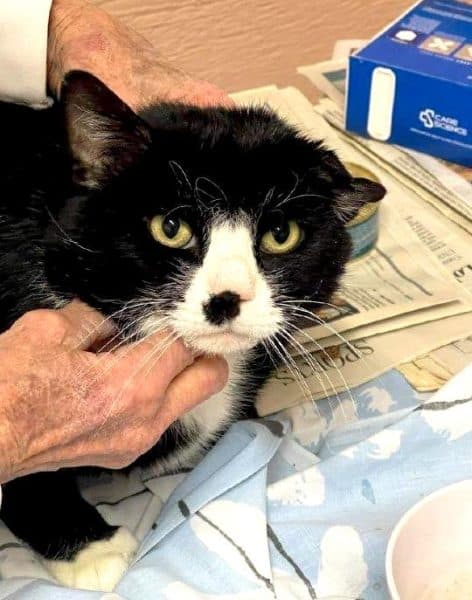
T or C’s animal shelter is painfully small (plans are under way to expand). The fewer unwanted puppies and kittens born, the less burden on the shelter, the fewer kittens roaming the streets dying from starvation and disease, the fewer puppies being dumped in the desert. Some of the best pets come from shelters, busting the myth that “shelters only have mutts.” So before plunking down hundreds of dollars for a purebred, consider adopting. It’s not only the health and well-being of the pet you adopt but yours as well. It’s proven that pet owners live longer, have lower blood pressure, and suffer less depression and loneliness than those who do not have an animal companion.

As with all nonprofit groups, you are urged to donate, donate, donate (donations are tax deductible). With SCARS, for example, you can set up an automatic monthly donation: even $10 a month helps. CAAT accepts food, and especially likes Purina Naturals, or 4Health found at Tractor Supply, but anything is appreciated. Don’t forget towels, paper towels, disinfectant, and toys (ask the recipient what is preferred). If your funds are limited, consider donating your time. Majie notes, “Volunteers are needed and we will train them.”
The Internet is brimming with statistics on how many people own pets, and specifically how many own cats, dogs, birds, and others. With a good search you can find out how many of those pets are abused, abandoned, neglected, or not spayed/neutered. But numbers aside, even just one is unacceptable.
Your pet is part of your family and needs to be treated as such, but if keeping up with your pet’s life is a struggle, contact one of these groups. If you or someone you know is in danger of having to surrender a pet due to not being able to feed them, please reach out. They can help.
Images for this article were provided by the author, Donna Catterick and organizations mentioned in the article.


Thank you Durrae! I posted this on the SCARS website and facebook page. Wonderful writeup.
Thank you for everything you do for the companion animals in Sierra County. I’ll post on my facebook page. Great article!